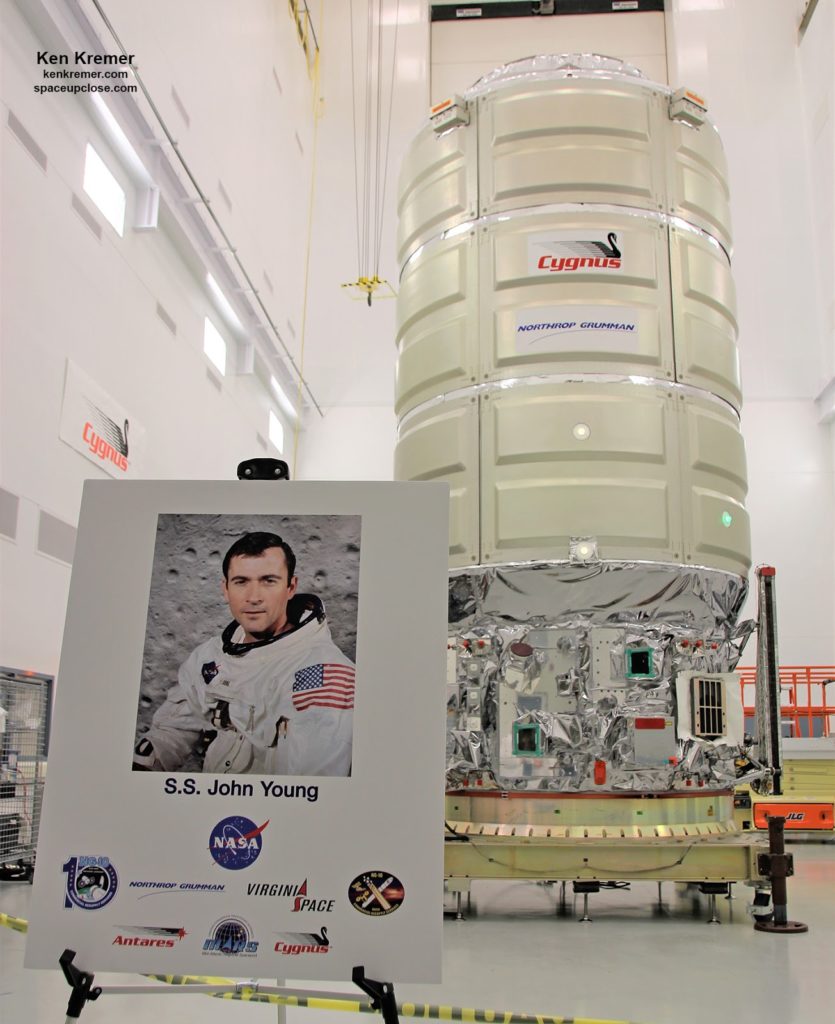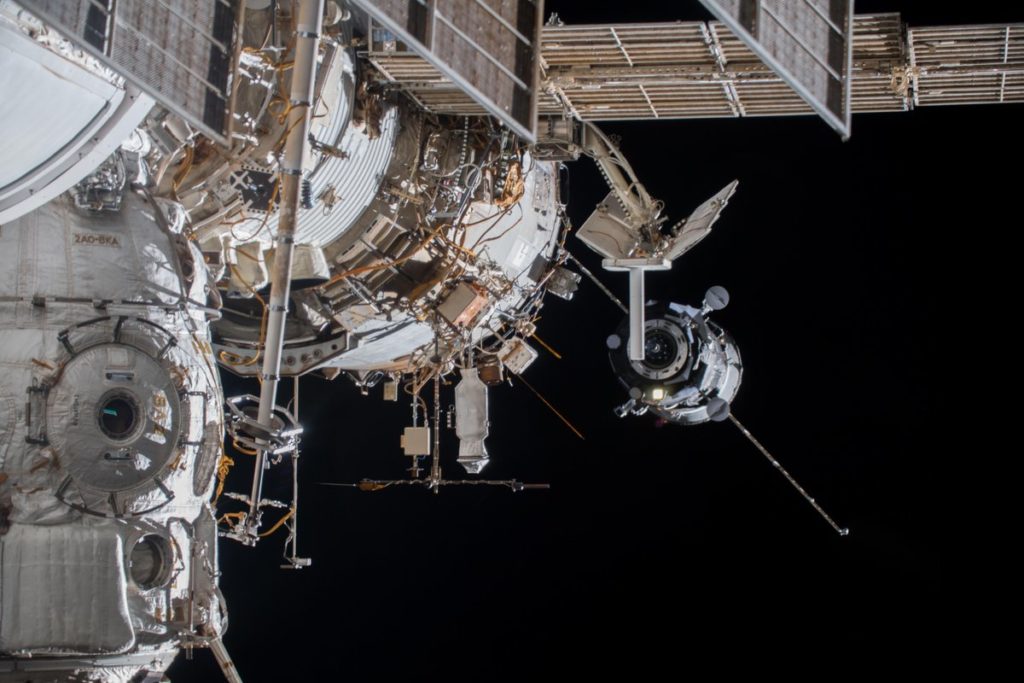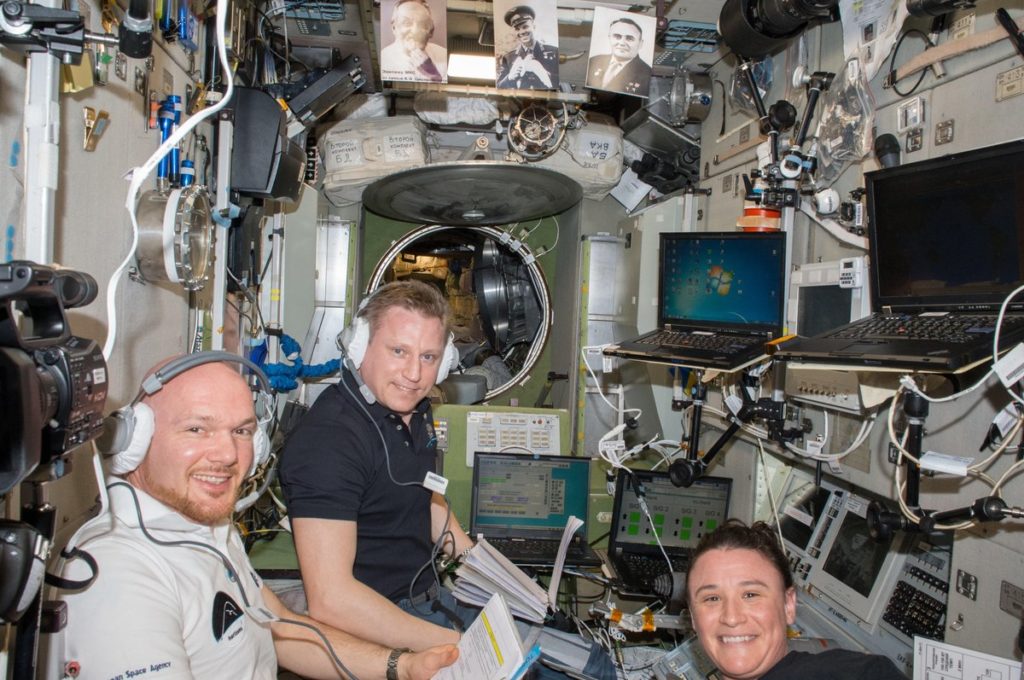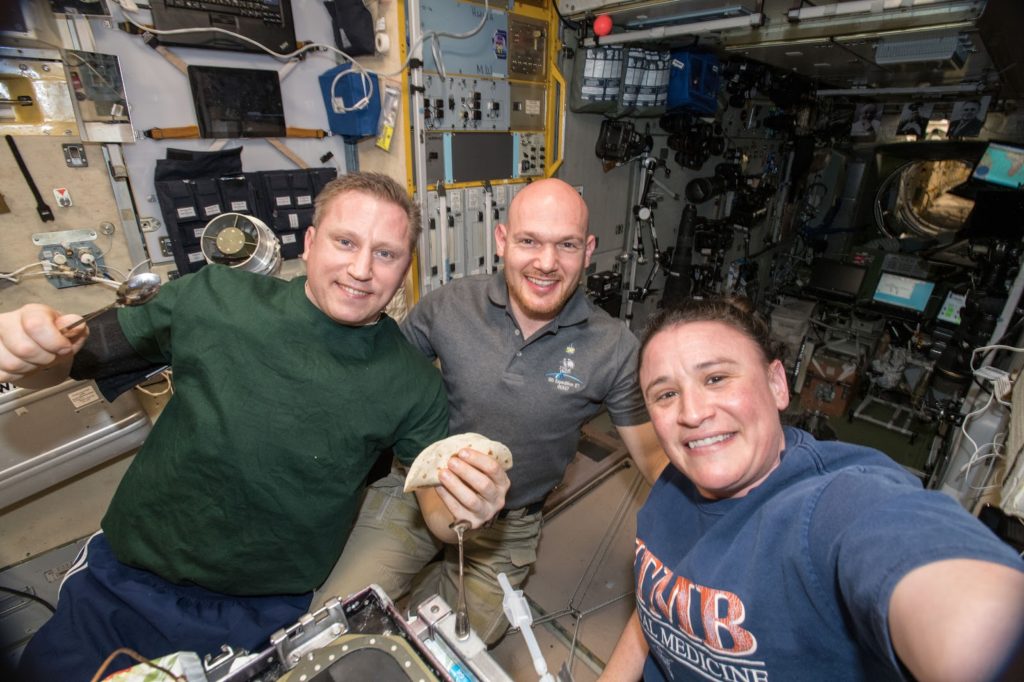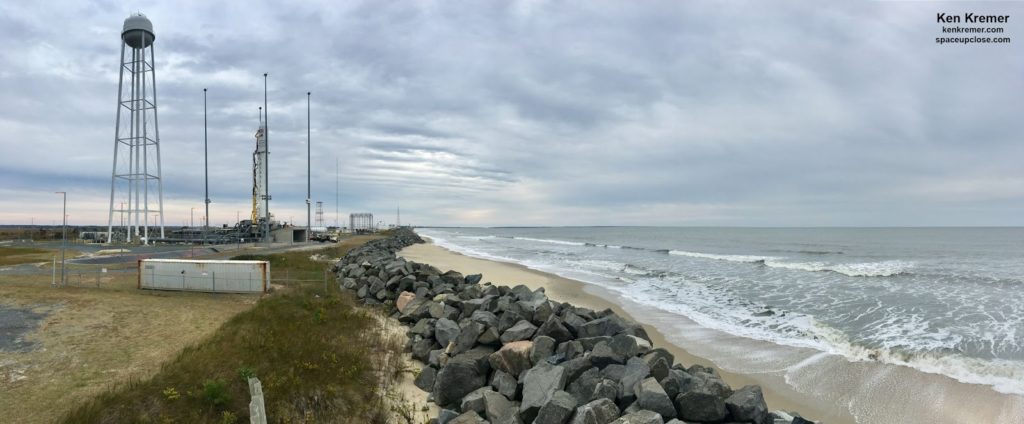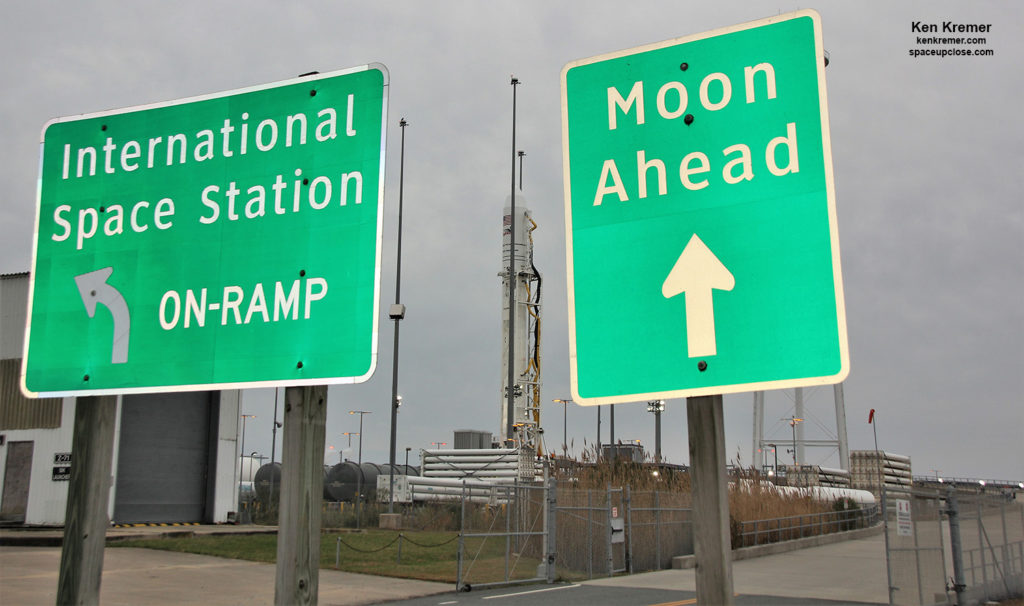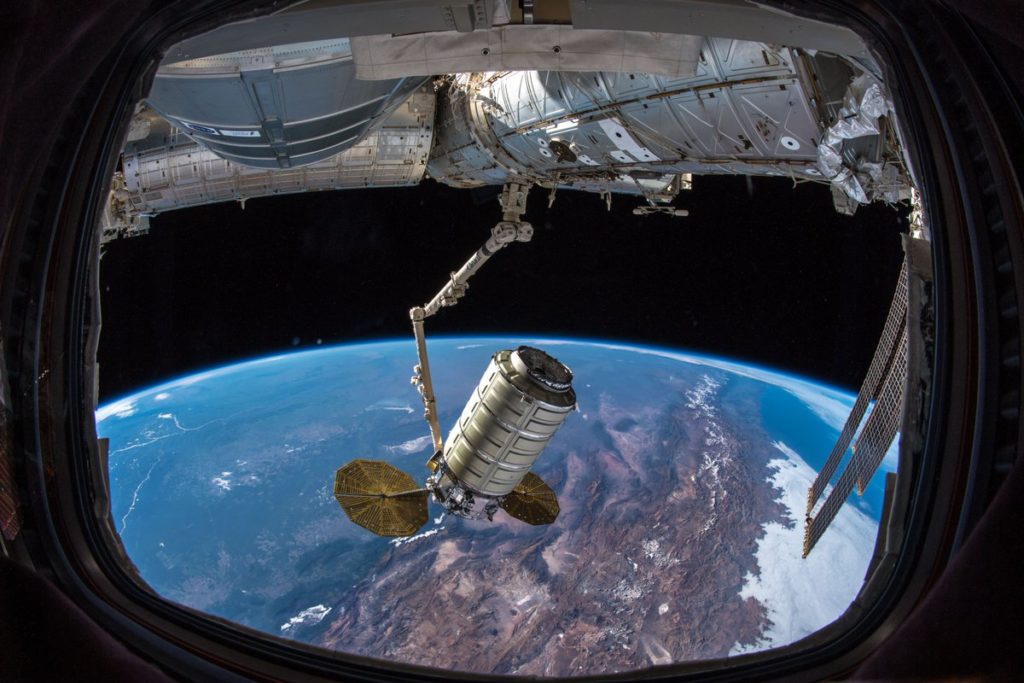 |
|
Northrop Cygnus NG-10 commercial resupply
spacecraft, named the S.S. John Young, grappled by the space station’s Canadarm2 robotic arm on Monday, Nov. 19, 2018. Credit: NASA/Serena Auñón-Chancellor |
Ken Kremer —SpaceUpClose.com
& RocketSTEM –22 November 2018
NASA WALLOPS
FLIGHT FACILITY, VA & CAPE CANAVERAL, FL– This is a very good and busy week
in space as the American Cygnus and Russian Progress sister supply ships from
the two main partners arrived back to back at the International Space Station
(ISS), bringing nearly 7 tons of cargo for the multinational crew – including
goodies to celebrate the Thanksgiving Holiday – And 20 years since launch of the stations
first element!
The ISSis a place where borders between humans are nonexistent and peace prevails for the
benefit of all humanity. Russia’s Zarya
control module counts as the 1st ISS element launched in Nov. 1998.
The Progress
and Cygnus cargo freighters arrived back to back just 1 day apart – actually only 15 hours and in that order.
Making for a first time feat in the stations 20 year history!
The commercial Cygnus NG-10 space freighter from
Northrop Grumman launched second on Saturday, Nov. 17 and
arrived second on Monday Nov. 19 at 5:28
a.m. EST (1028 GMT) delivering almost 3.7 tons of crew supplies
and new science experiments for the three person crew living and wrking aboard from
Germany, the United States and Russia.
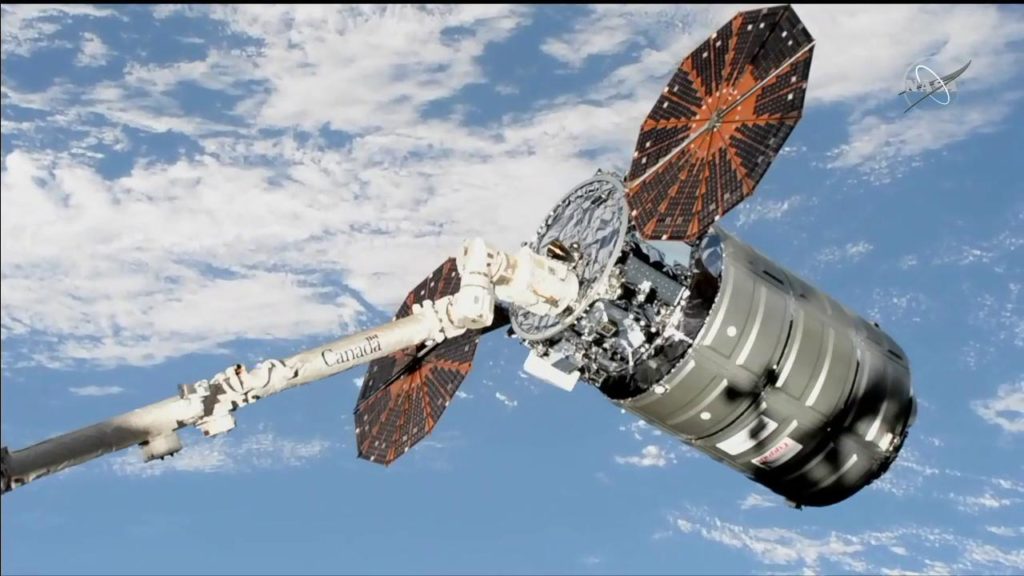 |
| The Cygnus BG-10 space freighter is pictured moments after it was captured by the Canadarm2 robotic arm operated by NASA astronaut Serena Auñón-Chancellor on the ISS on Nov 19, 2018. Credit: NASA TV |
Alexander Gerst for ESA (European Space
Agency) from Germany, NASA Flight Engineer Serena
Auñón-Chancellor from America and Roscosmos
Flight Engineer Sergey
Prokopyev from Russia.
first on Friday and docked first on Sunday Nov. 18 at 2:28 p.m. EST (1928 GMT) packed with almost
three tons of food, fuel and supplies after launching earlier in the day.
“Busy times for #Exp57. We just caught the 2nd cargo vehicle [Cygnus] in one day, first time in
@Space_Station history,” tweeted German astronaut Alexander Gerst,
Nov. 19.
“@AstroSerena operated
the #Canadarm while I sent navigation commands to
the #Cygnus vehicle, great teamwork. Welcome
aboard “S.S. John Young”! #Horizons”
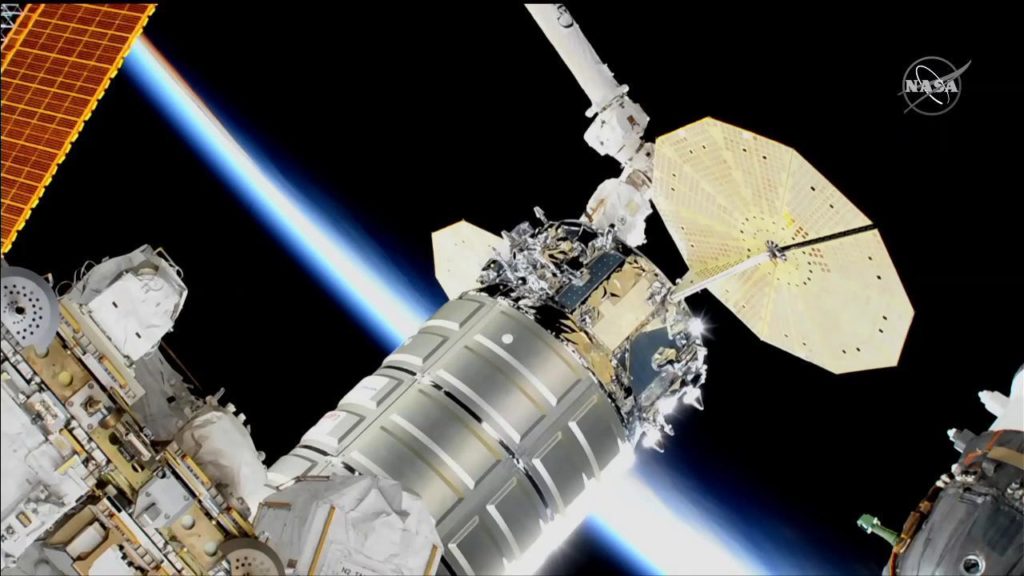 |
|
The International
Space Station heads into an orbital sunset as the Canadarm2 robotic arm guides the Cygnus space freighter to its installation point on the Unity module. Credit: NASA TV |
on Saturday, Nov. 17, Cygnus separated conducted a carefully choreographed
2 day orbital chase with a series of thruster firings to approach and rendezvous
with the outpost.
flawless liftoff of Northrop Grumman’s upgraded Antares 230 configuration rocket carrying the Cygnus
NG-10 supply ship took place right at the opening of the launch window at 4:01 a.m. EST on Saturday, Nov. 17, 2018 from seaside
pad 0A at NASA’s Wallops Flight Facility at the Mid Atlantic Regional
Spaceport in Virginia.
meters), Auñón-Chancellor
of NASA and Gerst of ESA maneuvered the space station’s 57.7 foot (17 meter) long Canadarm2 robotic arm to reach our and
grapple Cygnus with the end effector snares at 5:28 a.m. EST (1028 GMT), Monday, Nov. 19.
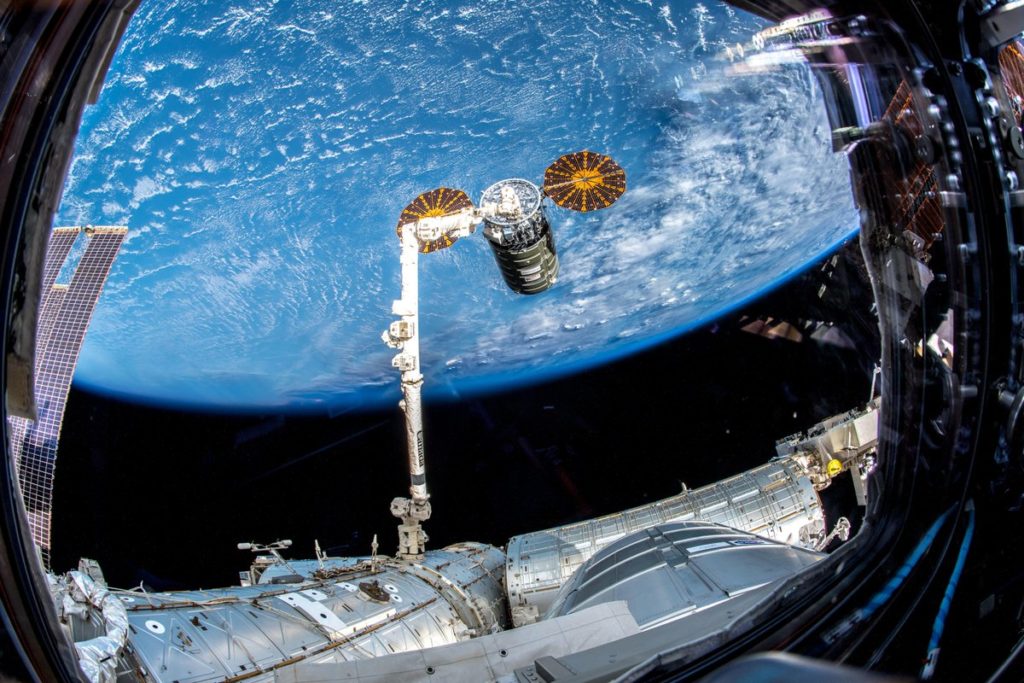 |
|
Northrop Cygnus NG-10 commercial resupply
spacecraft, named the S.S. John Young, grappled by the space station’s Canadarm2 robotic arm on Monday, Nov. 19, 2018. Credit: NASA/Serena Auñón-Chancellor |
domed Cupola module offering dramatic clear line of sight views of Cygnus. See photos
snapped by the crew herein.
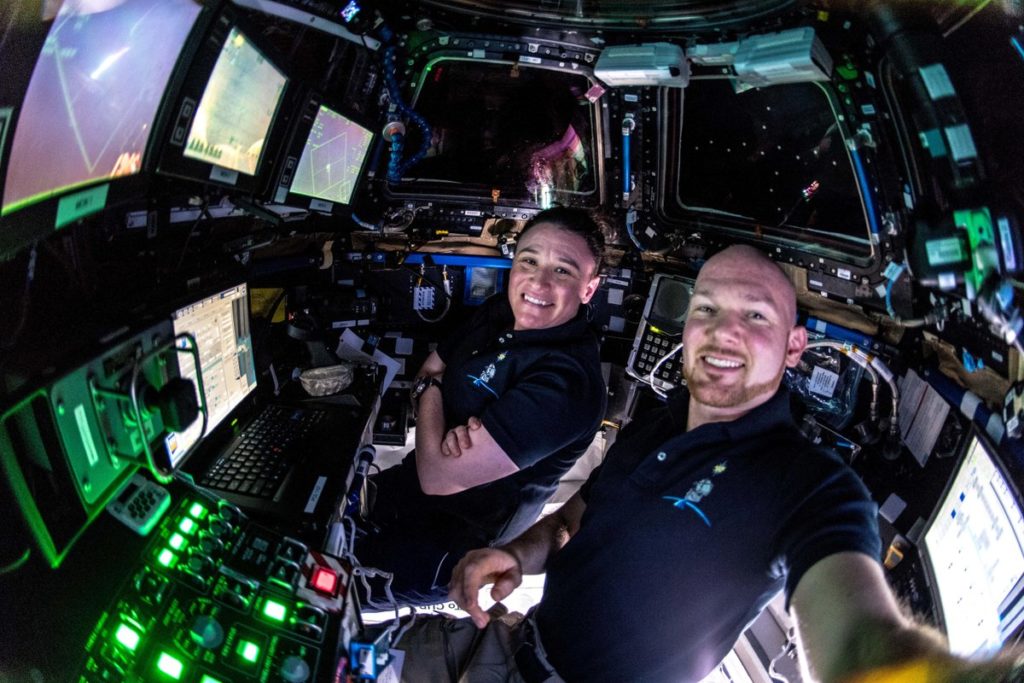
at Mission Control in Houston who finished moving the arm closer to mate Cygnus
at the stations Earth-facing port on the Unity module – the first element
launched by the US on the Space Shuttle back in 1998
16 bolts and latches need to secure Cygnus for a hard mate to Unity at 7:31
a.m. EST (1231 GMT).
of the rendezvous, arrival, capture and berthing of Cygnus – orbiting some 250 miles
(400 km) above Earth.
Cygnus today with @Astro_Alex…Proud to have The SS John Young
on-board!” tweeted NASA astronaut Serena Auñón-Chancellor.
John Young’ in honor of veteran renowned astronaut and moonwalker John Young.
He was NASA’s longest serving astronaut
and passed away earlier this year in January at age 87.
was selected for NASA’s second astronaut class and flew 6 times during the
Gemini, Apollo and Space Shuttle programs. He walked on the Moon during Apollo
16 in 1972 and commanded the first space shuttle mission in 1981.
had an especially busy day as he also assisted Russian cosmonaut Prokopyev to with
the Progress 71 to monitor the crafts autonomous docking to the Russian side of
the station.
welcomed a new Russian #Progress cargo vehicle on board, supplying
the @Space_Station
with fresh food, water, air and experiments. Sergey and I were monitoring its
flawless automatic approach to #ISS,
ready to step in if needed. Photo by @AstroSerena,”
tweeted German astronaut Alexander Gerst, on Nov. 18.
docked at 2:28 p.m. EST (1928 GMT) Nov. 18 to the aft port of the Zvezda Service Module on the Russian
segment of the station complex while soaring about 252 miles (403 km) over
Algeria.
1814:08
GMT (1:14:08 p.m. EST) atop a Soyuz-FG rocket from Launch Pad No. 1 the Baikonur Cosmodrome in Kazakhstan to begin
a 2 day station chase. That’s the same launch pad from which Yuri Garagin
launched on the 1st human spaceflight mission back in 1961.
this was the first launch of the Soyuz FG variant since the failed Oct. 11 launch of the Soyuz MS-10 with two crew members on board who safely survived an
emergency abort 2 minutes into flight. The failure was caused by a deformed sensor on one of the first stage strap on boosters
with cargo 3,350 kg (7,385 lb.) of cargo comprising science experiments,
research gear, food, water, spare parts, crew supplies and
vehicle hardware to support the Expedition 57
and 58 crews and dozens of the over 250 new and ongoing research investigations.
hours after it was captured and attached to the Unity module.
science freezers, transferring the new cargo and replenishing the orbital
laboratory. Cosmonaut Sergey Prokopyev
opened the 71P hatch after its automated docking Sunday and began unloading the
new gear,” NASA reported.
were loaded on board Cygnus.
from the U.S., Russia and Germany will share a traditional Thanksgiving meal
together with fresh ingredients delivered over the weekend on a pair of new
cargo ships. Commander Alexander Gerst
from ESA (European Space Agency) and NASA Flight Engineer Serena Auñón-Chancellor will take the day off in space. Cosmonaut Sergey
Prokopyev will work a normal day of
Russian science and maintenance then join his crewmates for the holiday feast.”
resupply cargo mission for NASA.
Cygnus NG-10 which includes:
lbs. / 1,141 kg
lbs. / 3,273 kg
lbs. / 77 kg
ton of science and research is on board from delivery to the Space Station. In addition to the ‘Refabricator’ which will recycle
waste plastic bags into a 3D filament to make tools and hardware, other experiments will try to growing large crystals of an important protein (LRRK2)
related to the development of Parkinson’s disease for the Michael J. Fox
Foundation, examine the growth of crystals involved in cement solidification, situational
awareness of the astronauts perception of motion,
body position and distance to objects changes in space, the lab-on-a-chip (fully
automated, multifunctional cell culture platform) investigation looking at
skeletal muscle cells, and a dust zapping experiment related to the formation of the early
solar system.
story.
approximately 3 months until February 2019.
series of cubesats and orbits above and below the ISS altitude at a safe distance
from the outpost.
into Earth’s atmosphere, disposing of several thousand pounds of trash.
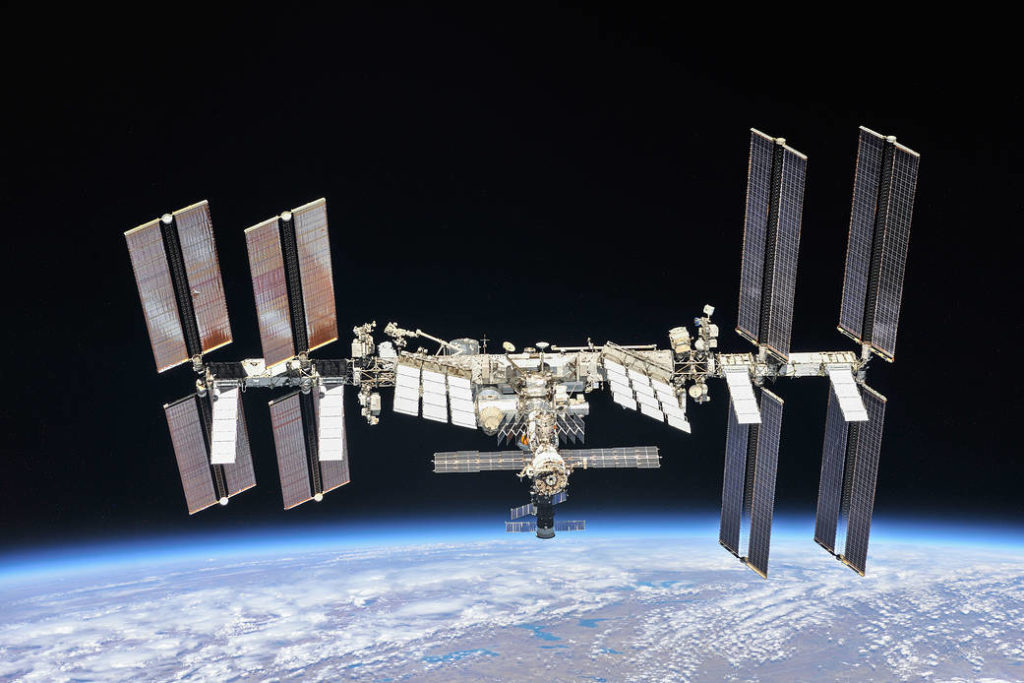 |
|
The International Space Station photographed by Expedition 56 crew
members from a Soyuz spacecraft after undocking on Oct. 4, 2018. NASA astronauts Andrew Feustel and Ricky Arnold and Roscosmos cosmonaut Oleg Artemyev executed a fly around of the orbiting laboratory to take pictures of the station before returning home after spending 197 days in space. The station will celebrate the 20th anniversary of the launch of the first element Zarya in November 2018. Credit: NASA/Roscosmos |
Boeing, Lockheed Martin, Northrop Grumman and more space and mission reports
direct from the Kennedy Space Center, Cape Canaveral Air Force Station, Florida
and Wallops Flight Facility, Virginia.
and human spaceflight news: www.kenkremer.com –www.spaceupclose.com – twitter
@ken_kremer – email: ken at kenkremer.com
scientist, journalist and photographer based in the KSC area.
Ken’s photos are for sale and he is available for lectures and outreach events
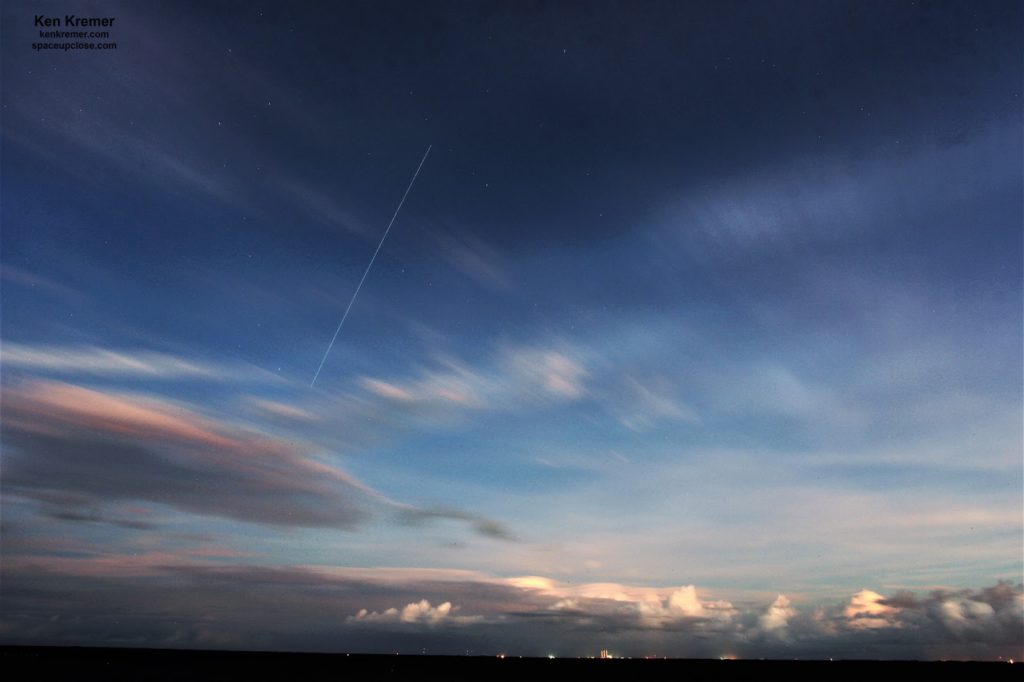 |
| ISS transits over NASA’s VAB on Black Friday, Nov. 23, 2018 with 3 Expedition 57 crewmembers on board from Germany, US and Russia. Credit: Ken Kremer |


